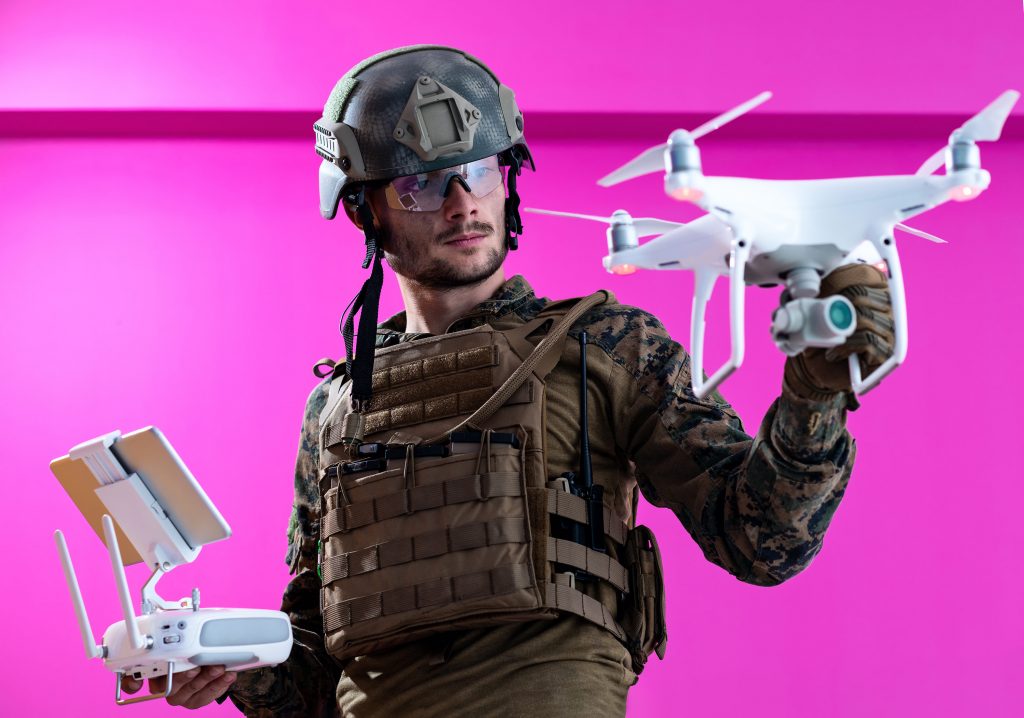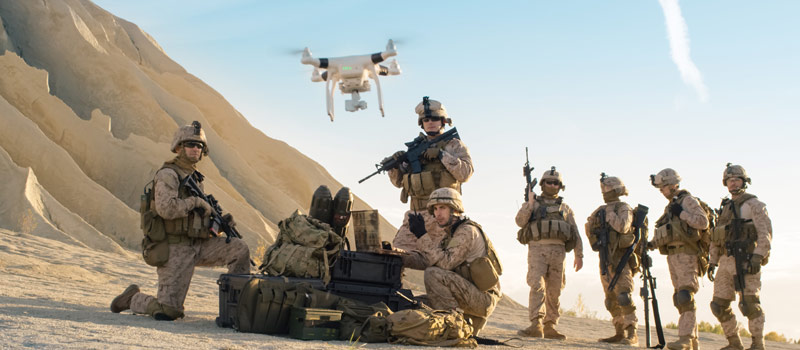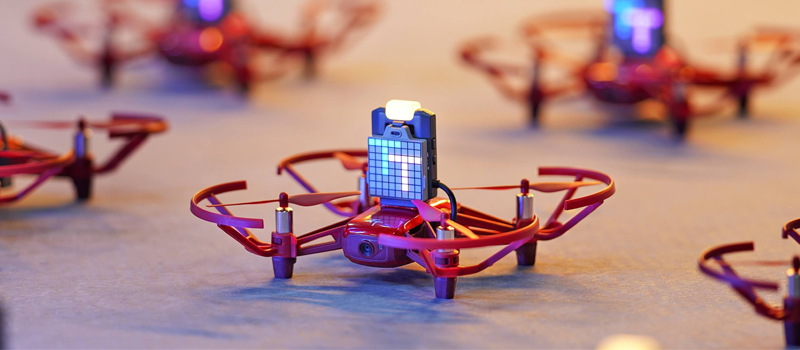One of the main responsibilities of a drone pilot (or any aviation professional) is to be constantly on the lookout for airspace hazards. Sometimes, these are visible via visual scanning. Other times, you may have to refer to maps or charts. Military training routes are an example of the latter.
If you’ve ever looked at a sectional chart or studied for the Part 107 knowledge test, then you’re probably a little familiar with the term. What exactly are military training routes and what hazard do they pose? What are drone pilots expected to do when flying near a military training route?
What are military training routes?
Military training routes (MTR) are pre-determined corridors in national airspace where military aircraft are permitted to fly below 10,000 feet at speeds beyond the 250-knot maximum limit for flight below 10,000 feet. As the name implies, these routes allow military services to train in airborne tactics, particularly surveillance and combat tactics needed at low altitudes. Military training routes are established as a joint venture of the FAA and the Department of Defense.
Each military training route is defined by geographical coordinates and is fixed to NAVAID stations on the ground. This helps the aircraft plying these routes to maintain a consistent heading or direction. From the line defined by the point and NAVAID fix, the corridor is extended to five miles on both sides, making an MTR corridor ten miles wide typically. However, this is not an absolute rule – the width of the MTR can across different route segments.
Each MTR is operated by a local military base. It is the responsibility of the appointed military base to send out Notice to Airmen (NOTAMs) at least two hours before any flight exercise to give ample warning to civilian aircraft to keep their distance from the MTR.
It’s easy to see how dangerous it can be if you fail to take heed of the presence and activity of an MTR. This applies to just about any civilian aircraft, including drones. For reference, the 250-knot speed limit is equivalent to around 300 mph. Aircraft in MTRs go faster than that.
If you’re flying near an MTR, you would hardly have any time to react to aircraft moving at those speeds. Although an on-air collision is unlikely, drone pilots are still expected to yield the right of way to any manned aircraft. This might not be possible if you’re flying along or very close to an MTR.
How to spot military training routes in sectional charts
To check for MTRs in a sectional chart, simply look for the bright red arrows. These are very prominent and should be easy to spot. The symbols for MTRs are pretty convenient as they also indicate the direction in which aircraft are flying within the route.
Each MTR is identified by a code that consists of a series of letters and numbers. These codes do not just help in identifying each route, but also indicate prevailing parameters for the route. To simplify the understanding of MTR symbols, here are two things to remember:
- An MTR can be flown either under visual flight rules (VFR) or instrument flight rules (IFR). These are helpfully integrated into MTR symbols either by a VR or IR prefix.
- Each MTR code contains a series of numbers that consist of either three or four digits. A four-digit MTR indicates that the route operates below 1500 feet AGL, while a three-digit MTR is flown at least one segment above 1500 feet AGL.
- As a general rule, routes below 1500 feet AGL are flown under VFR and those above 1500 feet AGL are flown under IFR.
With this knowledge, we can at least narrow down the MTRs with four-digit codes as the ones that pose the biggest hazard to drone flight.
Protocols for drone pilots

Regardless of the altitude of operations of an MTR, all drones are expected to yield right of way when they are active. Keep in mind that military aircraft may not necessarily abide by the same rules as civilian aircraft, so it’s not even impossible for them to fly by close to 400 feet AGL.
There are several reasons why drone flight (or any civilian flight) along or near MTRs is heavily discouraged. At the speeds with which military aircraft fly, a remote operator or visual observer may not have enough time to detect the incoming aircraft and make the necessary evasive maneuvers. Records also show that a majority of MTR operations are carried out under VFR, so there may also be not enough time for the pilot to detect hazards along the MTR.
To be clear, flying a drone near or along an MTR is not prohibited. However, pilots are advised to exercise extreme vigilance when flying near an MTR. A good rule of thumb is to avoid MTRs whenever possible.
If you must fly near an MTR for a commercial job, then it would be prudent to check for NOTAMs in the area that are related to that MTR. Drone pilots can also get in touch with the local flight service station (FSS) to ask for any current information on the MTR or if there is planned route usage. We recommend doing this if you’re flying within 100 nautical miles of the geographical coordinates of an MTR as indicated in a sectional chart.
If you plan to get in touch with an FSS, you may have to provide information about your planned operations such as the time, position, destination, and route of flight. This will help the FSS determine if your operations will come in conflict with ant active MTR. MTR activity is hardly straightforward and only the FSS can provide information related to the schedule of operations, the altitude of operations, and the corridor width for each segment of the MTR. They may also give fair warning about any nearby operations similar to yours.
Final thoughts
As drone pilots, part of being integrated into national airspace is following the rules that maintain airspace safety. The rule on MTRs is one of the more ambiguous ones simply because of the dynamic nature of military flight exercises. The symbols that denote MTRs on sectional charts provide a good deal of information but are not nearly enough for drone pilots to exercise safe flight practices.
For this reason, we suggest that drone pilots treat MTR symbols as warning signs. They may not give you the exact details about the associated hazards, but they should be a prompt for you to look around and be more vigilant than usual. In this case, the best course of action would be to scan for NOTAMs or call up a nearby FSS to collect more information. As with most situations in life, keeping yourself informed is the first step towards safety.



